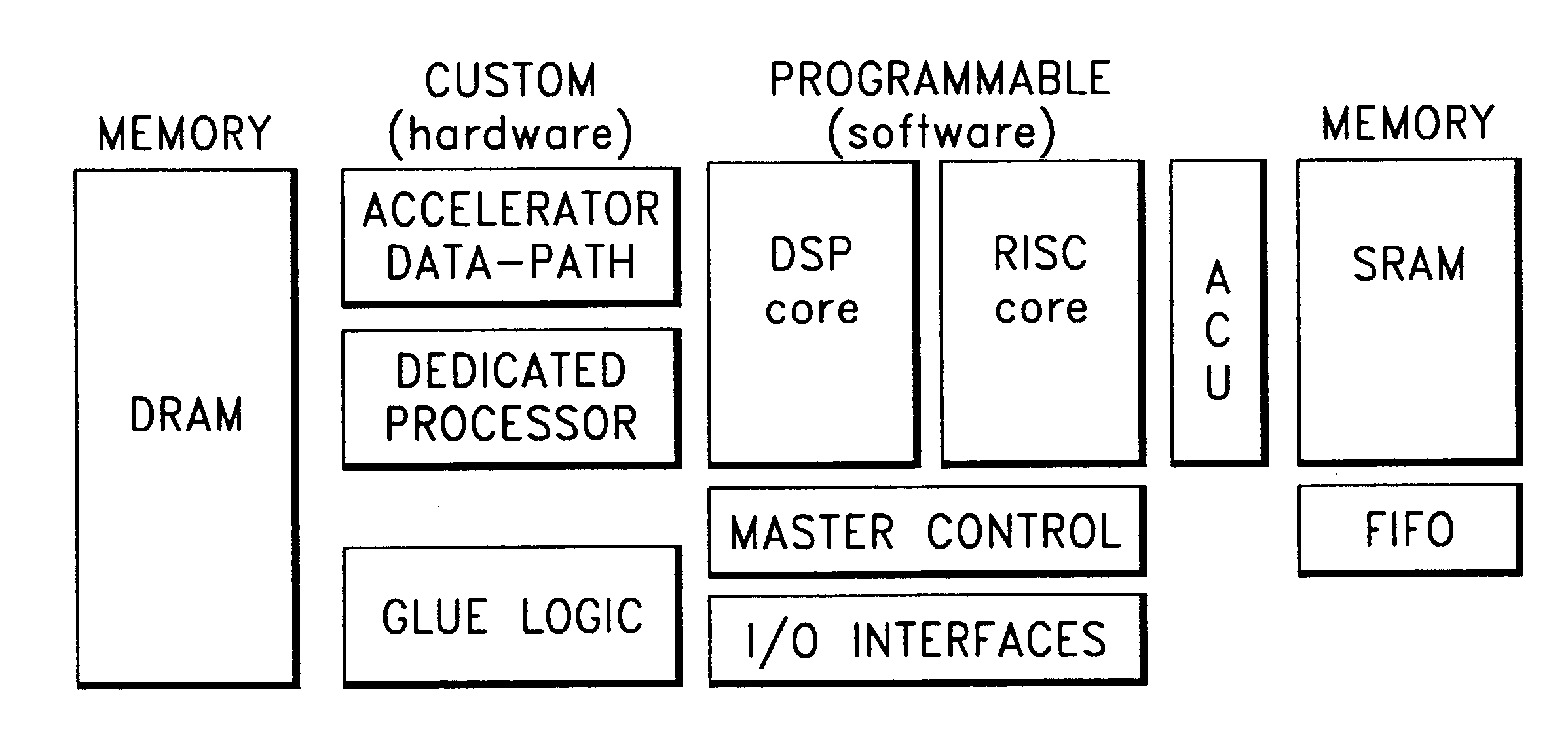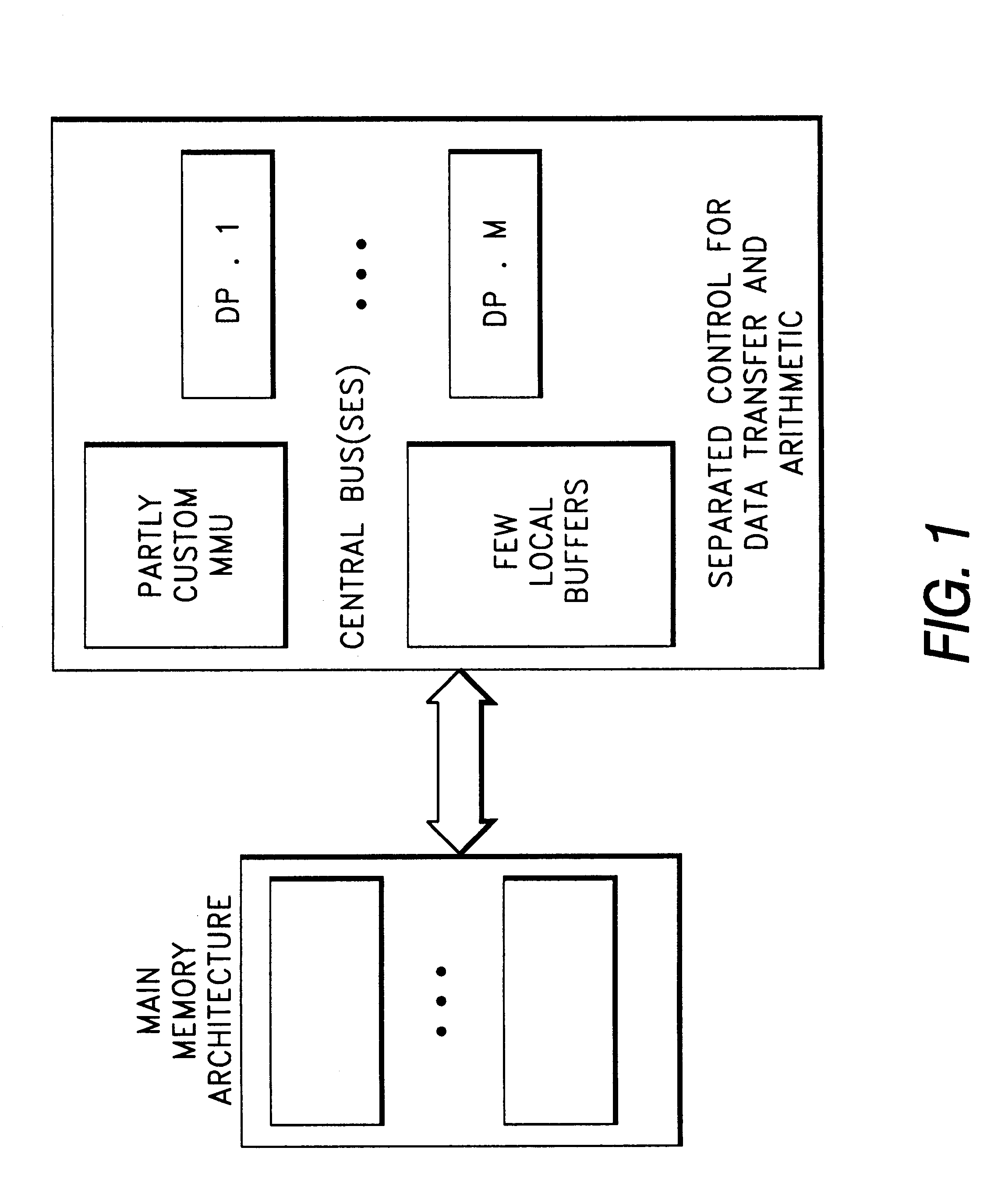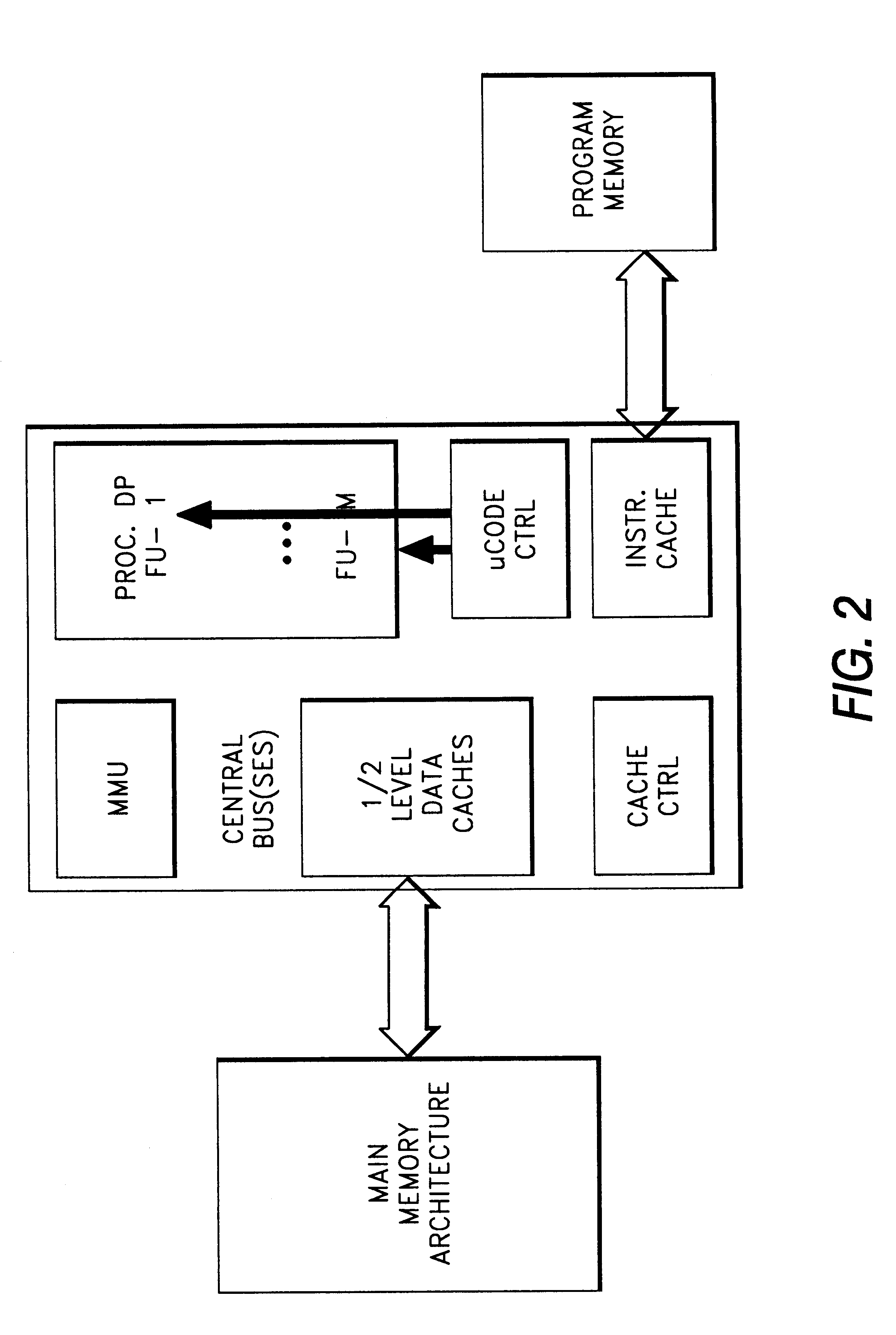Power-and speed-efficient data storage/transfer architecture models and design methodologies for programmable or reusable multi-media processors
a data storage and transfer architecture technology, applied in the direction of multi-programming arrangements, memory adressing/allocation/relocation, instruments, etc., can solve the problems of power management and reduction becoming a major issue, design is difficult (mmu, control, interfaces, etc., to achieve the effect of maintaining the flexibility of a traditional sw implementation, without incurring cost overhead
- Summary
- Abstract
- Description
- Claims
- Application Information
AI Technical Summary
Benefits of technology
Problems solved by technology
Method used
Image
Examples
first embodiment
This first embodiment is easily extensible to a situation where several CPs 21 are present, each with their own adapted master controller. In that case the IP (which can also be duplicated) has to follow them up concurrently. Obviously, this situation is required if the initial algorithm contains concurrent processes. Especially if they cannot be scheduled statically during the HW mapping, this is unavoidable. The dynamically scheduled processes are then preferably moved to different CPs 21, interacting with each other in the conventional way to execute the algorithm, but individually monitored by the IP(s) 22 with the special protocol in accordance with the present invention.
An example of a protocol to support the above interaction may have 4 phases and may be as follows (see FIG. 8). Assume that one routine 34 or part of a routine has to be moved from the CP 21 to the IP 22 (M3 in FIG. 9). The general case is easily extended from this. Note that the designer has full knowledge and...
second embodiment
The first embodiment still has a relatively limited flexibility in the customized points to insert the context switches. This problem can be solved by allowing more impact on the IP architecture. To achieve this, the address space of the IP can be extended to also include a subset of the dedicated memories in the CP. In accordance with a second embodiment of the present invention, the programmable processor is allowed to have access (through a shared address space plus a dedicated switch network) to a subset of the dedicated memories inside the custom hardware organization to obtain more power-efficient flexible processor. One detailed organization of an IP 62 and a customized hardware part 61 is shown in FIG. 20 as an example only. Which memories 66 to select is clearly an important design choice. Again a trade-off is involved between extra overhead to allow the IP 62 to access these memories 66 and reduced overhead in moving code from CP 61 to IP 62. This embodiment allows reducti...
third embodiment
In a third embodiment of the present invention, more power-efficient fully programmable (parallel) processors are described in which the complete data transfer and storage organization of the programmable processor is modified to be better matched towards the need of a particular multi-media target domain. The latter involves much bigger investments in new SW processor design capabilities and advanced compiler technology. The proposal is to integrate much more domain-specific customization in the data transfer and storage architecture of multi-media processors, as illustrated in FIG. 24. This embodiment of the present invention may be advantageously used with a customized processor. For instance, the IP architecture shown schematically in FIG. 24 may be advantageously combined with custom processor 21 as shown in FIG. 6 to replace the IP 22. Individual aspects of this customization include:
1) Adding flexible bypasses not only over a single cache level but over any combination of cac...
PUM
 Login to View More
Login to View More Abstract
Description
Claims
Application Information
 Login to View More
Login to View More - R&D
- Intellectual Property
- Life Sciences
- Materials
- Tech Scout
- Unparalleled Data Quality
- Higher Quality Content
- 60% Fewer Hallucinations
Browse by: Latest US Patents, China's latest patents, Technical Efficacy Thesaurus, Application Domain, Technology Topic, Popular Technical Reports.
© 2025 PatSnap. All rights reserved.Legal|Privacy policy|Modern Slavery Act Transparency Statement|Sitemap|About US| Contact US: help@patsnap.com



